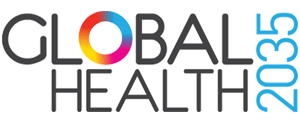October 14, 2015
The stark disparities that exist in health today across countries and communities can be greatly reduced, creating more equal opportunities for survival and well-being everywhere, say the authors of a new study published in PLOS ONE (October 9).
At the annual United Nations General Assembly meeting last month, the UN adopted a new set of Sustainable Development Goals (SDGs), which includes one goal for health (SDG 3). The health goal includes a set of targets to be achieved by 2030, such as reducing the global maternal mortality ratio by two thirds (from 210 to 70 per 100,000 live births) and reducing the child mortality rate in all countries to 25 per 1000 live births or below.
How feasible are these targets? Colin Boyle, deputy director of Global Health Sciences at University of California, San Francisco, and colleagues addressed this question in a study in which they modeled what would happen if all low-income countries (LICs) and lower-middle-income countries (LMICs) were to build strong health delivery systems and to aggressively scale up the delivery of existing medicines, vaccines, diagnostic tests, and other health tools and any new tools that will become available in the next 15 years.
The Commission on Investing in Health's Global Health 2035 report estimates the investment case for a grand convergence in health outcomes globally. In this study, Achieving a "Grand Convergence" in Global Health: Modeling the Technical Inputs, Costs, and Impacts from 2016 to 2030, Boyle and colleagues estimate what the grand convergence investment case might achieve – and what investments would be required – by 2030.
The authors found that, on average across all LICs and LMICs, the maternal mortality ratio would fall to about 169 for LICs and 69 for LMICs per 100,000 live births by 2030 and the child mortality rate would fall to 27 for LICs and 13 for LMICs per 1000 live births. The authors conclude that "by 2030, the time horizon for the SDGs, an integrated investment plan for low-income and lower-middle-income countries could yield under-5 mortality rates comparable to upper-middle-income countries today, and set the stage for continued convergence with high-income countries"
"The last 15 years have seen unprecedented improvement in human health in low-income settings. Our analysis suggests that we have just scratched the surface of what is possible," Boyle said. "We hope that policymakers striving to achieve the SDGs will see this convergence analysis as an indication that further dramatic, rapid gains in health are both possible and affordable."
Read the study at PLOS ONE Achieving a “Grand Convergence” in Global Health: Modeling the Technical Inputs, Costs, and Impacts from 2016 to 2030.
